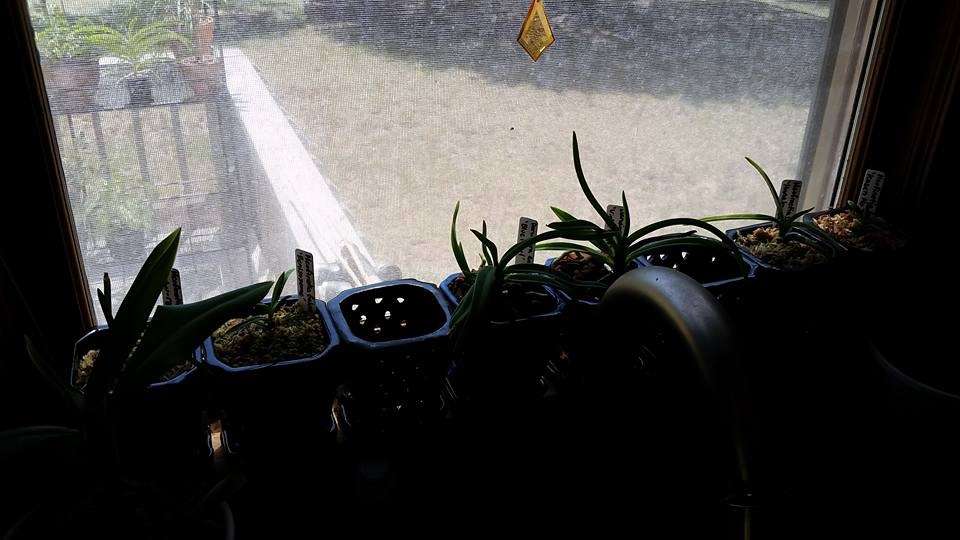Sirius
Plant Nerd
- Joined
- Jan 28, 2008
- Messages
- 476
- Reaction score
- 0
Thanks to the kindness of Marco, I am back in the fold of Neofinetia growers. He gifted me growths of four varieties which I have set up in my most prime of growing locations, the kitchen windowsill. I get early morning direct sun and bright reflected afternoon light here, plus plenty of humidity from water getting sprayed in the sink. This spot stays warm in the Summer and cool in the Winter, so Neos should be happy here. Terrible and entirely too large photo to follow...

I have room for exactly two more Neos in this growing area. This is what I am growing so far...
Kishu Ryokufu - light green flowers (but may be white according to Marco)
Benisuzume - light pink flowers
Hanakanzashi - dark red flowers with three tails
Kasen No Tora - white flowered bean leaf with variegation
Darwinara Rainbow Stars violet blue flowered plants x2.
So, my problem is I can't decide what to do with the remaining two spots. I have the strange flowering Neos covered with Hanakanzashi. I have the bean leaf varieties covered with Kasen. I don't think you can find a more reliable pink than Benisuzume, and Kishu Ryokufu would be a nice green if I can get it to bloom color correct.
I am almost sure I want a nice, multi growth Seikai for one of the spots. It is, and always will be the gold standard of Neos in my opinion. I keep bouncing around between ideas of Kinginrasha, a nice Amami island standard, or another always nice bean leaf variety. So come on Neo growers, help me out. I'm going to place a custom, multi-growth order for whatever two I decide on, so I need to pick varieties that don't cost $1000 per growth. Let's not get too crazy.

I have room for exactly two more Neos in this growing area. This is what I am growing so far...
Kishu Ryokufu - light green flowers (but may be white according to Marco)
Benisuzume - light pink flowers
Hanakanzashi - dark red flowers with three tails
Kasen No Tora - white flowered bean leaf with variegation
Darwinara Rainbow Stars violet blue flowered plants x2.
So, my problem is I can't decide what to do with the remaining two spots. I have the strange flowering Neos covered with Hanakanzashi. I have the bean leaf varieties covered with Kasen. I don't think you can find a more reliable pink than Benisuzume, and Kishu Ryokufu would be a nice green if I can get it to bloom color correct.
I am almost sure I want a nice, multi growth Seikai for one of the spots. It is, and always will be the gold standard of Neos in my opinion. I keep bouncing around between ideas of Kinginrasha, a nice Amami island standard, or another always nice bean leaf variety. So come on Neo growers, help me out. I'm going to place a custom, multi-growth order for whatever two I decide on, so I need to pick varieties that don't cost $1000 per growth. Let's not get too crazy.



